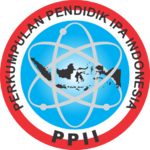The Use of Science Media Learning in Grade 7 in SMPIT Al-Yasmin Bogor
Abstract
This study aims to determine the use of instructional media in science learning. The subjects of this study were students of grade 7 SMP. The data collection technique used was non-participant, with the sampling technique used was purposive sampling. The results showed that the percentage of student responses from SMPIT Al-Yasmin Bogor to learning media with an indicator of the use of learning media was 83.67% on average, on the indicators of students' attitudes towards using media an average of 70.80%, on the indicator of the frequency of using learning media obtained average response is 70.83% and indicators of benefits in using learning media get an average percentage of 68.86%. Through this research, it was revealed that the use of science learning media in grade 7 SMPIT Al-Yasmin Bogor was good and varied.
Downloads
References
Elkaseh, A. M., Wong, K. W., & Fung, C. C. (2016). Perceived Ease of Use and Perceived Usefulness of Social Media for e-Learning in Libyan Higher Education: A Structural Equation Modeling Analysis. International Journal of Information and Education Technology, 6(3), 192–199. https://doi.org/10.7763/ijiet.2016.v6.683
Falahudin. (2014). Pemanfaatan Media dalam Pembelajaran. Diponegoro Medical Journal (Jurnal Kedokteran Diponegoro), 1(4), 104–117.
Firmansyah. (2009). Mudah dan Aktif Belajar Biologi. Pusat Perbukuan Departemen Pendidikan Nasional.
Hidayati, N., Sari, P., Mulyani, S., Susilowati, E., Rudyatmi, E., & Info, A. (2021). The Environmental Caring Character through Biology Learning in Senior and Junior High School. Journal of Biology Education, 10(1), 1–8. https://doi.org/10.15294/jbe.v10i1.24459
Istiqlal, A. (2018). Manfaat Media Pembelajaran Dalam Proses. Jurnal Kepemimpinan Dan Pengurusan Sekolah, 3(2), 139–144.
Kustandi, C. (2016). Beberapa Hasil Penelitian yang Menunjukkan Dampak Positif. Ghalia Indonesia.
Lismayanti, Meri; Hamidah, Afreni; Anggraeni, E. (2016). Pengembangan Buku POP UP Sebagai Media Pembelajaran Pada Materi Crustacea untuk SMA Kelas X. Jurnal Penelitian Universitas Jambi Seri Sains, 18(1), 44–48.
Maunah, B. (2009). Landasan Pendidikan. Teras.
Novaliendry, D., Darmi, R., Hendriyani, Y., Nor, M., & Azman, A. (2020). Smart Learning Media Based on Android Technology. International Journal of Innovation, Creativity and Change., 12(11), 715–735.
Nur, I., Mukti, C., & Nurcahyo, H. (2017). Developing Computer- Based Biology Learning Media to Improve the Students ’ Learning Outcom. Jurnal Inovasi Pendidikan IPA, 3(2), 137–149.
Pala, A. (2011). the Need for Character Education. International Journal of Social Sciences and Humanity Studies, 3(2), 23–32.
Puspita Sari, A., & Setiawan, A. (2018). The Development of Internet-Based Economic Learning Media using Moodle Approach. International Journal of Active Learning, 3(2), 100–109. http://journal.unnes.ac.id/nju/index.php/ijal
Sugiyono. (2017). Metode Penelitian Kuantitatif, Kualitatif, dan R&D. Alfabeta.
Wahyuni, S., AR, M., & Susanna. (2017). Persepsi Siswa terhadap Penggunaan Media Pembelajaran Fisika di SMA Negeri se-kota Banda Aceh. Jurnal Ilmiah Mahasiswa (JIM) Pendidikan Fisika, 2(1), 135–140.
Authors who publish with ISEJ: Indonesian Science Education Journal agree to the following terms:
- Authors retain copyright and grant the ISEJ: Indonesian Science Education Journal right of first publication with the work simultaneously licensed under Creative Commons Attribution License (CC BY 4.0) that allows others to share the work with an acknowledgment of the work's authorship and initial publication in this journal.
- Authors can enter into separate, additional contractual arrangements for the non-exclusive distribution of the published version of the work (e.g., post it to an institutional repository or edit it in a book), with an acknowledgment of its initial publication in this journal.
- Authors are permitted and encouraged to post their work online (e.g., in institutional repositories or on their website) before and during the submission process, as it can lead to productive exchanges, as well as earlier and greater citation of published work.












